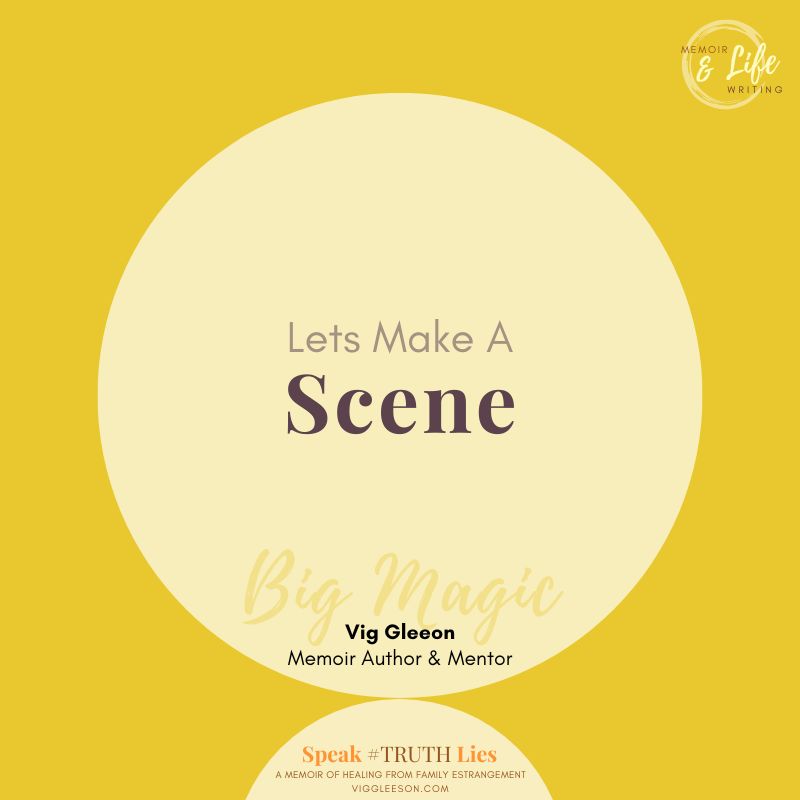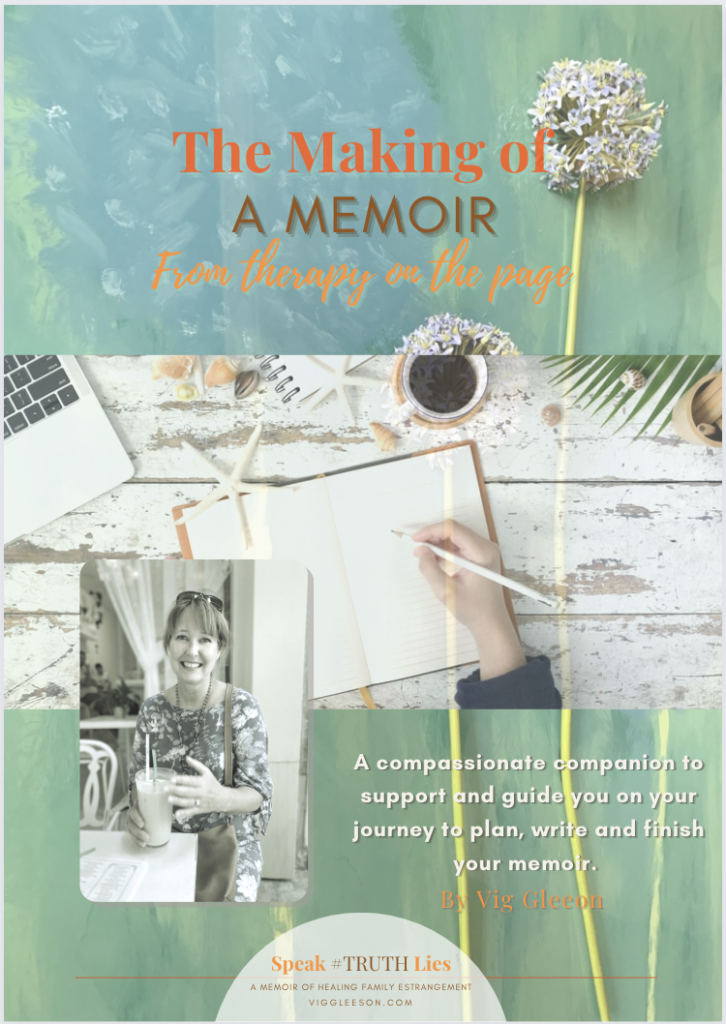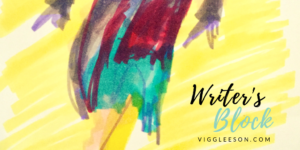Think of the first paragraph of your memoir as the opening scene of a movie or TV series. Every story, every movie, every book starts with a scene and after the first scene follows another, and another.
Scene after scene after scene makes a chapter.
Here are my fundamental elements for creating great scenes.
Every scene has an entry and exit point that moves the story (narrative arc) forward. In memoirs the focus is most often on the protagonist and how she experiences her surroundings and the supporting characters in her life in a specific scene. Developing our power to craft good scenes helps us master the number one compass for good storytelling – to Show, Don’t Tell.
3 guiding questions for a scene
What is this about? What does it show (what’s at stake) and how does it move the story forward?
6 elements of a scene.
Setting = Show the setting with vivid descriptions of the physical environment. Aim to include sounds, smell, time of day, temperature etc. (it was 30° tells, while ‘sweat trickled in rivulets down my back’ shows how the character experiences the heat). Bring out the small details to make the scene real and vivid.
Character(s) = Show the physical appearance, mannerisms and emotional or psychological traits that are important for the reader to understand and engage with the character (i.e. walks with a limp or stride with confidence, speaks with a lisp or a firm voice etc.)
Dialogue = brings the scene to life and lets the reader hear the characters interacting. Remember, we learn more about a character by how another character speaks and interact with them. Nobody expects a memoirist to remember exact dialogue but when we close our eyes we can hear (in our own head) how the character(s) spoke. Aim to use realistic and authentic dialogue that reflects the character’s personality and shows their thoughts, feelings, and conflicts.

Emotion = shows what’s at stake for the character(s) and the tension they feel. In an opening scene, think of this as the ‘current state of mind’ that will evolve over time with each ‘curveball’ (plot point) the character experience as the story unfolds. At the end of the memoir, the reader will feel how the protagonists changed through what they went through. It reveals the protagonist’s new view of the world.
Conflict or tension = Every scene should have some form of conflict or tension to engage the reader and drive the narrative forward. It could be an internal struggle, a disagreement between characters, or a larger external conflict. (Example: instead of saying my father didn’t understand me, show this through an argument or ‘the crushing sound of eggshells’ so prevalent in silent treatment)
Reflection = gives the reader more insight into the character through the narrator’s voice. You don’t need to reflect on every scene, try it out and see where it strengthens your story. Take care that your reflection doesn’t take the reader out of the story. In good memoirs, we often find reflections at the end of a chapter.
In memoirs, we aim to draw the reader in with scenes that focus on the protagonist (you). This is how we engage the reader and make it clear, in their minds, what is at stake. This is why they continue to turn the pages, and at the end, rave about how good our story is, and that’s how we sell more books without too much ongoing marketing effort.
If you are looking for a developmental editor to help you with your memoir or true-life fiction you are welcome to a Free Review of your first 1,000 words.
Working with a developmental editor is like a personal relationship, it is built on trust and compassion. Always work with development editors who have written and published their own memoirs, for only published memoirists truly understand the emotional impact of writing a memoir has on the author and can best serve you on your journey to publishing your story.
If you enjoyed this guide please consider sharing the link with your writing groups or on social media. Please note this material is copyrighted and may not copied or rebranded.
I’m working on a free Memoir & Life Writing guide. At the moment I’m calling it ‘The Making of a Memoir,‘ but I think I like Making Memoir better – which do you prefer? Or do you have a different idea? Maybe I ‘should’ call it ‘Your free guide to Memoir & Life Writing‘. . . 🤔 I’m thinking this will be a series of PDF downloads . . .
This is me launching before I’m ready and I’m pondering aloud on the web page. 🙃 I feel vulnerable, excited and brave 🙂
Help yourself to a copy. It’s not finished yet, so let me know how I can improve it. Is there anything you don’t agree with or think I should add? There’s something not right with the colours 🎨 None of the 🔗 works – I have a few videos to record but my YouTube Channel is live.
I am so grateful you are here. 🧡 Head over to Instagram or our Facebook group to join the banter, email me or post your thoughts in the comments below ⬇️
Much Love and Light
Vig 🧡




Leave a Reply
You must be logged in to post a comment.